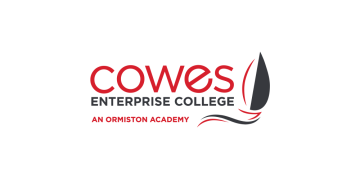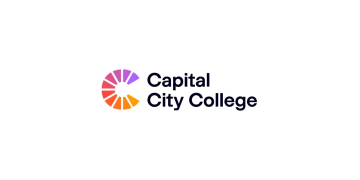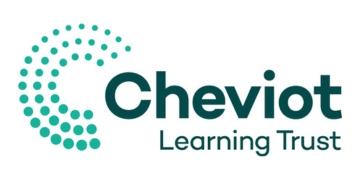Mergers will define the next phase of MAT growth but too many obstacles still stand in the way, writes one CEO
The current crisis has brought into sharp relief the value a larger school trust can bring to its network of schools – technical expertise to support remote learning, a stronger central team, greater scope for staff to support across schools and more. Even in our relatively small trust of 10 primary schools, I have seen the benefits at close quarters.
Our trust is ambitious to grow but the options are limited. Schools converting to become academies has slowed, the number of forced academy orders is down. It is not enough from which to base a viable growth strategy.
Although, it is not clear cut what might be the ‘ideal’ size for a MAT. The consensus appears to be that with 12 to 20 schools, a trust becomes robust enough to withstand the economic, political and structural challenges they might face. Even with 10 schools, I would certainly put our Trust in that category. However, with 20 or more schools, it is argued a trust becomes ‘economically successful’. This is certainly important, but should only be seen as a contextual facilitator that allows a trust to achieve its core mission – namely to add value to each school and ultimately the education and life chances of each child in our care.
At present, there are currently 775 school trusts with two to five schools, and 1,502 single academy trusts. The maths simply doesn’t work for these to all grow to 12 to 20 schools independently. A new approach is needed and I think mergers need to be a key part.
Mergers are likely to become a key vehicle for growth
A recent report by PrimarySite, Sustainable Growth in Multi Academy Trusts, suggests mergers are likely to become a key vehicle for growth and that smaller MATs may well merge together or join larger MATs. Worryingly, it appears that although many believe mergers are likely, very few MATs are giving it serious consideration. The report found that although MAT leaders expected mergers to happen they weren’t focusing their own growth strategy on merging with other trusts.
It appears that for many, merging is a last resort rather than a planned strategy. Many involved in the research suggested mergers would only take place if a MAT CEO was leaving or due to financial pressure. This approach seems overly passive to me.
In education we are driven by wanting to ensure children and young people achieve their full potential. As trust leaders we need to ask ourselves whether the size of our MAT is enhancing or curtailing the opportunities we can offer to learners. However, I don’t think responsibility rests with the CEOs of trusts. This is because mergers always mean changes to the top team – you can’t have two CEOs. Instead, it is the Board that needs to be alive to the possibility of a merger and have tests in place to understand when it might be a sensible option.
There is a dearth of guidance about what might happen if a smaller trust wishes to merge with a larger one. We need to open up a wider debate about when merging makes sense and what it involves. Could RSCs play a central role in brokering mergers? Absolutely. The DfE needs to provide clearer direction if they want MATs to grow sustainably.
We need to shift the perception of mergers and re-cast them in a positive light. The PrimarySite research shows that many MAT leaders are expecting mergers but find the prospect unattractive. Do we need to create a new language that reflects the value of a small trust merging with a larger one? Yes, but in the end, it is voluntary to merge with another trust, and it is vital that the benefits to learners should drive the decision. Going forward, successful mergers will choose the spirit of partnership over the hostile takeover; embrace commonalities and shared ethos over division and vested interests, and focus with ever greater clarity on delivering a compelling vision for their trust to the benefit of every child and member of staff in the communities they serve.
Andrew Moorhouse was a member of the steering group for PrimarySite’s research report Sustainable Growth in Multi Academy Trusts.








Or, now here’s a really radical idea, we stop creating MATs at all and go back to a system of Local Education Authorities appointed by democratically elected representatives of the county or area? Then the Headteachers of each school can once again feel free to run their school for the greater good of the local area and not seek to further privatise the state school system.
MATs already have an accountability deficit within communities and with their finances, expanding them just increases these flaws. Super MATs will almost certainly see CEOs earning a million pounds and where is the evidence that they are better than those schools that are not part of an academy structure?
‘Swallow or be swallowed’ – that’s the alternative reading of the above. Heads in single-academy trusts (and LA schools, of course) lose their autonomy when they become part of a MAT.
The majority of primary schools are still LA-maintained. This suggests they are satisfied with LA support despite LAs being cash-strapped and money available for school support being reduced because larger, mostly secondary schools have become academies.
So this is an interesting example of the anti-academies brigade approach.
The first post above decries the whole principle of academies and wants to go back to a local authority system whereby a single entity runs hundreds of schools (as well as running pretty much every other service from waste to social care). It uses the trope of “democratically elected” as some form of shield against the reality we all know which is that local authorities historically failed some schools and all the democracy in the world didn’t stop some communities being failed for decades. SchoolsWeek actually did an interesting piece on this a year ago, but it’s conveniently forgotten by local authority proponents (https://schoolsweek.co.uk/concerns-over-failing-schools-make-no-impact-on-local-elections/). Some academies fail as well, so there is no perfect system and pretending that we can all achieve utopia by turning back the clock is not helpful.
The second post takes a 180-degree conflicting view, whilst at the same time also bashing MATs. It always amuses me that when it suits their arguments opponents of MATs hold up single academy trusts as a ‘good thing’, a bulwark against the evil MATs, when previously they decried them. The post then goes on to draw a conclusion without supporting facts – that the reason the majority of primary schools haven’t converted is because they’re happy with their local authority. There could of course be a huge number of other reasons, but notwithstanding this the argument is then rather torpedoed by the admission that the vast majority of secondary schools have converted. Using the poster’s own logic, this must be because they were NOT satisfied with LA support (even when the LAs had more money available).
Both arguments also bite hard on the “autonomy” angle. The first post looks at LA schools through rose-tinted glasses imagining somehow that the heads there have some sort of say about things like hiring and firing staff, pay rises, spending money on premises etc. They don’t of course, just ask them. The second post falls into the standard approach of assuming that all MATs are huge. This is, of course, because this is the position pushed by unions, media and others which looks at groups like Harris, Reach and Oasis and makes out that they are typical of the MAT landscape. The reality is that the VAST majority of academies within MATs are in MATs with less than 5 schools, with these MATs being run by the schools themselves with no external bodies involved like ARK, David Ross etc.
Apologies for the rant.
I agree with the original article that mergers between academy trusts should be considered at a strategic level by the Board. Mergers happen all the time in business and other state sectors such as health for a variety of reasons many of which are about improvement and opportunity. It is not a case of “swallow or be swallowed”, as suggested by one commentator, but a strategic consideration of what is right for the education of the children in the schools. As the article rightly concludes – ‘It is vital that the benefits to learners should drive the decision’.
The match of ethos and culture between academy trusts exploring a merger is a key factor in establishing a strong forward vision for the new partnership, and trusts that fail to devote the time needed to this early important stage will inevitably struggle.
Whilst the Regional Schools Commissioners can play a part in helping encourage merger consideration, their ability and capacity to broker partnerships that can effectively consider ethos and culture and develop a clear memorandum of understanding around the principles for the new partnership, may be limited.
This is for the academy trustee boards to consider – and one where accessing external partnership brokerage support and facilitation can be of huge benefit. By bringing in not only expertise, knowledge and capacity, but also much needed impartiality, support and challenge, trust boards exploring merger opportunities gain access to support and an effective proven brokerage approach that will lead to well informed decisions made for the right reasons.
Whilst stepping out of the politics with regard to whether academies are a good or bad thing, there is a simple market economics issue at play in terms of the evolution of academies and trusts. All industry sectors will go through the same process of:
Startup – Growth – Shakeout – Maturity – Decline
We have clearly passed Startup and we’re now well through Growth, the following Shakeout will start to consolidate the stronger players and filter out the weaker players. It is important not to confuse strongest with best and weakest with worst. Academies and Multi Academy Trusts are now in this phase of their evolution, if they like it or not.
From my own experience, I visited a MAT office on a business park and was surprised to see another MAT office right next door. Further investigation revealed that the two MATs covered the same geographical area with similar numbers of schools in each. On the one hand this doesn’t look efficient, on the other hand it may drive excellence and efficiency through competition. The reasons behind it reveal a more worrying story, both MATs were formed by strong and successful local Head Teachers who didn’t get along on the school forum twenty years ago and don’t get along now.
Whilst this initial generation of MAT leaders are in place, this will always be the case. As the Shakeout phase takes hold, a new generation of bean counters and managers will take over the helm at MATs, individual personalities reflected on the MAT will be watered down and the barriers to merging will lower.
I’m sorry Mark Watson doesn’t fully appreciate the role of LEAs and yes they’ve failed in the past but they’re still better than the undemocratic march to privatisation that the MAT system is a cloak for.